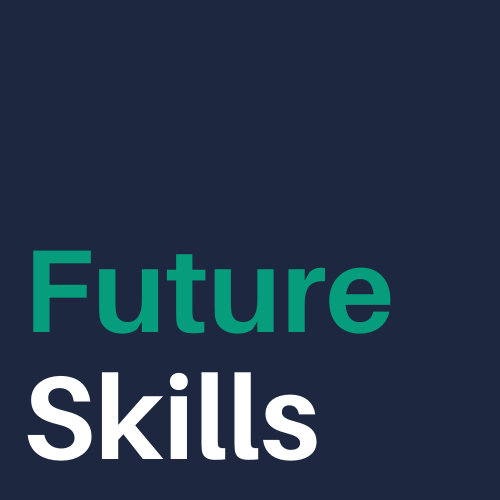My Stitcher app is crowded. Week after week I watch all the podcasts that could be slip by, unheard. I have too many favorites and not enough time for all of them. But one episode regularly makes the weekly cut: Leading Lines. Here’s how the podcast for edtech in highered describes themselves:
“We explore creative, intentional, and effective uses of technology to enhance student learning, uses that point the way to the future of educational technology in college and university settings. Through interviews with educators, researchers, technologists, and others, we hope to amplify ideas and voices that are (or should be!) shaping how we think about digital learning and digital pedagogy.”
The short version: they provide a much needed perspective on educational technology in higher education. The result is a podcast that dives deeper into how teaching and learning is evolving alongside new technology. It’s positively refreshing. I’ve learned about second-language learning with wikipedia, new technologies for that enhance engagement in the classroom, and designing MOOCs.
I’ve worked on both sides of the edtech sector: as a vendor and client. In 2010, I did business development for an international startup. I worked remotely for an international student recruiting platform which gave students all over the world direct access to universities. My days consisted of scouring websites for university contacts, pitching administrators on email, following up on leads, demoing the platform, and waiting. Lots and lots of waiting. I loved our product and was out to convince the world of higher education how we were going to solve their problems (or at least North and South America, my territory). The job was filled with equal parts rejection and learnings. I didn’t know the term edtech then; we positioned the company as a social tool as social media was all the new rage. Though the term wasn’t around, I embraced the edtech hype. I believed that technology could solve many issues in higher education (ignoring the fact I’d never actually worked in higher ed at that point). The startup eventually folded.
In 2014, when I started work in career services at Yale School of Management, I was on the other side of edtech as a potential client. I was on the receiving end of a lot of pitches in part because of the brand name. The thinking goes like this: if a company can claim Yale SOM as a client and post our public testimonial they can sway other schools to do the same. We did the same when I worked at a startup. I remember trying to close a Notre Dame deal to score a brand name to dangle in front of future clients. The strategy works. At Yale SOM my director always evaluated new tech starting with: Harvard/Booth/Wharton is using it, so we should take a look.
In the beginning I had much empathy for sales teams whose emails I regularly ignored. I was ridiculously busy. The emails and requests for time were competing with ambitious students and a department that loved emails and meetings with equal fervor. Occasionally an email would break through (the power of follow ups!) and I’d chat. But the empathy faded over time as I experienced the worst of edtech sales:
- Vendors insisting that their dashboard would solve all my problems without actually listening to my problems
- Vendors who insisted on following their script. Once a person launched into a lengthy explanation on the basic concepts of data collection, ignoring the fact we were an MBA career services office which collects and tracks data on every student for mandatory reporting purposes.
- Vendors insisting on demos when the product had no fit in our department
- Vendors pushing to move forward despite my statements that I made zero decisions and didn’t control the budget – I was merely an internal lobbyist and would advocate where possible.
- Vendors casually ignoring my questions at conference booths until they saw Yale on my badge; then it was all ears and smiles. (I know it happens and I know how boring booth work is but the frequency in which it happened was so disappointing).
- Vendors ignoring the platform fatigue issue in our department (at one point I had students using 6 platforms and even I was tired of platforms).
- Vendors with no understanding of UX, a particularly large red flag considering we’re dealing with learning outcomes. If you don’t understand users, how can you support their learning outcomes? Grad Leaders is the worst offender in this case, despite their prominence in the market.
These are the worst offenders of course. To be fair, edtech sales is rough . Decision-making in higher education is opaque. You don’t know who makes the decisions and when. Sales cycles are notoriously long compared to the private sector. Rejection is almost a relief compared to the non-responses. I look back now at some of my sales emails and I cringe. I was definitely a shitty edtech sales person at times (thankfully I’ve improved).
Now I read most edtech coverage with a critical eye. I wonder: did they talk with users before creating their solution? Is their solution based on a real problem? How are users benefiting from this technology? So when I read the edtech news at EdSurge Highered and CB insights I like to balance it with the Leading Lines podcast. I’m also a fan of Hack Education Newsletter, a comprehensive yet critical take on edtech news (and policy).
My relationship with edtech is always evolving. I’ve flipped sides again, having launched a company in the edtech space and pitching universities. But having a critical perspective keeps me grounded as I build and pitch. Podcasts like Leading Lines remind me regularly to consider both the learner’s and administrator’s perspective when designing for education.

